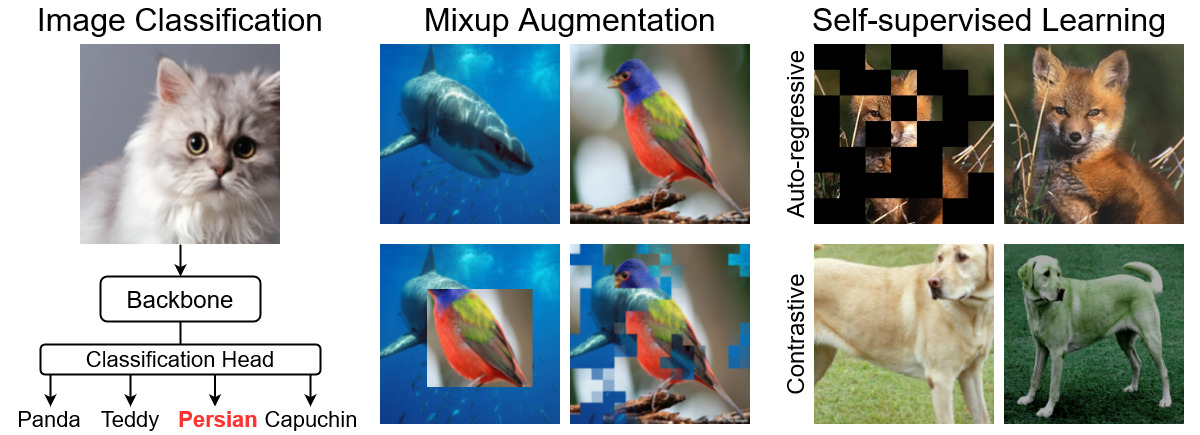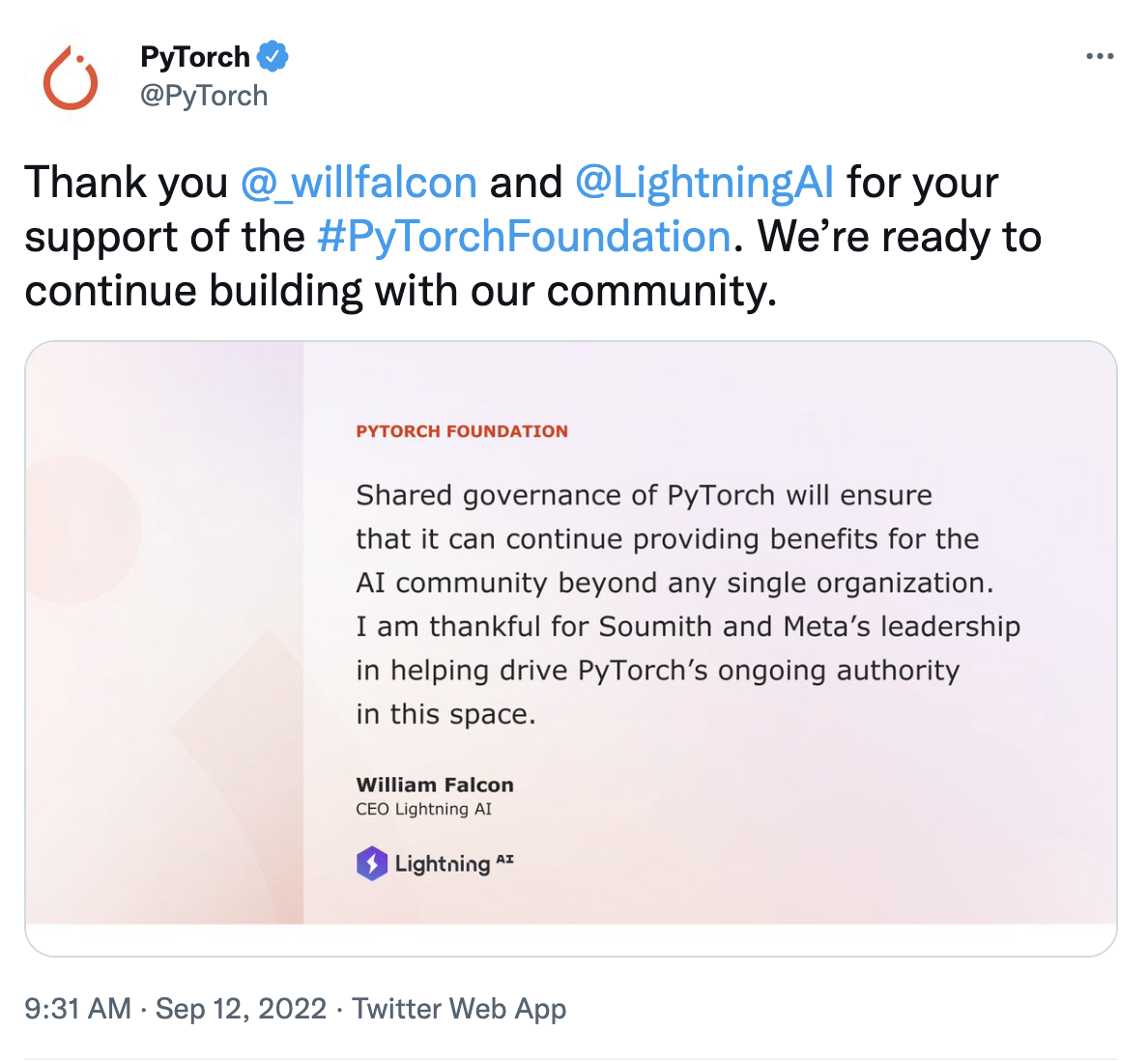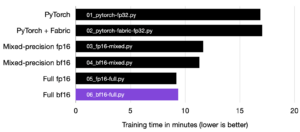Can a single policy control the movement of hundreds of different robots? Is it possible to make 3D mapping more accurate and cheaper at the same time? These are some of the questions researchers are asking themselves this week. PyTorch moves to the Linux Foundation, China races to develop its own AI chips and NLP research gains a Chinese dataset. Let’s dive in!
Featured Story
PyTorch is moving from Meta to the Linux Foundation where it will live under the newly-formed PyTorch Foundation. The move will give the code more independence from Meta and also give a broader voice to other big partners, including Google and Amazon. Meta will “continue to invest in PyTorch and use it as our primary framework for AI research and production applications at the company”.
Research Highlights
- Researchers from The University of Hong Kong released a novel LiDAR-inertial-visual fusion framework, R3 LIVE++, that claims to have achieved higher accuracy and robustness than other existing state-of-the-art SLAM systems. The mapping accuracy and resolution of current visual SLAM (simultaneous localization and mapping) systems used for high dynamic range (HDR) imaging, virtual environment exploration, and 3D video gaming are typically low in quality, require a computationally expensive process and have difficulty reconstructing large-scale outdoor scenes. The novelty of this new framework lies in the coupling of LiDAR-inertial odometry (LIO) and visual-inertial odometry (VIO) that jointly and incrementally build a 3D radiance map of the environment in real-time, requiring overall lower compute power.

- Researchers in China present CSL, a large-scale Chinese Scientific Literature dataset, which contains the titles, abstracts, keywords and academic fields of 396k papers. Existing datasets supporting Natural Language Processing (NLP) research are centered around the English language, restricting the development of international NLP research. To the researcher’s knowledge, CSL is the first scientific document dataset in Chinese and serves as a Chinese corpus.
- Researchers from UC Berkeley introduced a framework for training generalized locomotion (GenLoco) controllers for quadrupedal robots that is the first of its kind. Most learning-based frameworks for controller development focus on training robot-specific controllers, an inefficient process that needs to be repeated for every new robot. By training controllers on a wide range of randomly generated robot morphologies, the researchers developed a single new framework that can be directly transferred to novel simulated and real-world robots with diverse morphologies.
ML Engineering Highlights
- The US government’s decision to restrict Nvidia and AMD from selling their most advanced chips to clients in China has dealt a heavy blow to China’s AI sector. Chinese IT giants are now tasked with prioritizing the development of their own AI chips, an endeavor that experts say could take many years to compete with US-made chips.
- In a new partnership with Revieve, a brand experience platform that uses AI and AR, JCPenney will be offering their customers skin diagnostics technology at the makeup counter. The Revieve tool uses “more than 120 skin metrics to provide users with an in-depth analysis of customers’ skin, and offers JCPenney Beauty product recommendations and skincare education tailored to their needs”.
- MLCommons, an open engineering consortium, announced that its MLPerf Inference v2.1, an industry standard suite of benchmarks used to measure ML inference performance, is gaining record-breaking traction in the world of ML. Used by Nvidia, Azure, Dell, Fujitsu and many others, the benchmark guarantees a level playing field amongst its users by staying open-sourced and peer-reviewed.
Open Source Highlights
- Developers will no longer have to choose between using Java or Python for their next Android projects thanks a new Python SDK called Chaquopy. With support from Anaconda, the free and open-source tool allows users to write Android applications in Python or Java.
- Voltaiq, a software company that specializes in analytics for electric vehicle batteries, open-sourced a platform containing battery cell data sets along with the algorithms and models used to assess battery performance. Executives hope this library will get academic and industry research into the hands of manufacturers faster so they can increase the speed at which they ramp up battery production to meet automakers’ aggressive EV launch timelines.
- Engineers from Westlake University, in Hangzhou, China have released OpenMixup, an open-source toolbox for visual representation learning with mixup based on PyTorch. The toolbox features popular backbones, mixup methods, semi-supervised, self-supervised algorithms and more.

Lightning AI Highlights
- With the release of PyTorch 1.12 in May of this year, PyTorch added experimental support for the Apple Silicon processors through the Metal Performance Shaders (MPS) backend. With the 1.7 release of PyTorch Lightning, we made it super easy to switch to the MPS backend without any code changes. Click here to learn how to train models faster with Apple’s M1 or M2 chips.
Community Spotlight
Want your work featured? Contact us on Slack or email us at olya @lightning.ai
- Researchers at the Medical Imaging Bioinformatics lab at St. Francis Xavier University put together a PyTorch implementation of a paper aimed at improving the treatment of Multiple Sclerosis (MS). The project uses PyTorch Lightning to model the development of brain lesions, helping clinicians monitor the progression of the disease.
- If you’re already building Lightning Apps or enjoy sharing your machine learning knowledge with others, then you should apply to join the Lightning League, our new ambassador program!
Conferences
- NLP 2022: 11th International Conference on Natural Language Processing September 17-18, 2022 (Copenhagen, Denmark)
- GTC 2022: Developer Conference for the Era of AI September 19-22, 2022 (San Jose, California)
- MLNLP 2022: 3rd International Conference on Machine Learning Techniques and NLP September 24-25, 2022 (Toronto, Canada)
- PyTorch Conference: Brings together leading academics, researchers and developers from the Machine Learning community to learn more about software releases on PyTorch. December 2, 2022 (New Orleans, Louisiana)
Don’t Miss the Submission Deadline
- ODSC West 2022: Open Data Science Conference November 1-3, 2022 (San Francisco, California) –
- CCVPR 2022: 5th International Joint Conference on Computer Vision and Pattern Recognition December 9-11, 2022 (Kuala Lumpur,Malaysia)
Upcoming Community Events
- Meetup: Speed up your Machine Learning Applications with Lightning AI at PyData Miami / Machine Learning Meetup September 22, 2022

